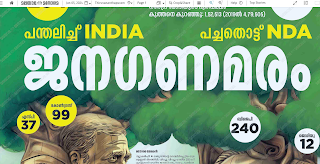I was working with lots of tables last week. Information scattered on many pages was rearranged and put on tables for more clarity. Because I was focusing on tables for most part of last week, I decided to dig a bit about tables and their structure.
Broadly, there are two types of tables: Formal and informal. The formal tables are the ones we are familiar with and often encounter in user manuals . Tables that have proper titles and column headings belong to this type. Information in these type of tables can stand on its own. These tables are usually placed closer to the text. I feel the common look-up-a-value table is a an example of a formal table.
Informal or in-line text tables do not have columns or titles. They are part of the text and are self-explanatory. For me, they look a bit odd in documents.
Decision tables allow the user to take a decision and distance tables show data or values related to categories.
Structure of a Table
A table is identified by a brief and a descriptive table title. A few companies strictly follow a guideline that a table should be referenced in text before the appearance of the table. Such a reference in text can also be a hyperlink, even if the table is on the same page.
Headnotes are short notes, a word or two, appearing below the title. They are also set in parentheses (brackets).
Column headings run horizontally and row headings vertically. The stub is the leftmost row. Headings that form the top column are boxheads. If column headings spread across columns, they are called spanner heads or decked heads. If a line or a horizontal rule divides a main column heading and a spanner head, the line is a spanner rule. Spanner heads can be used to avoid repetition.
Tables also have section headings that precede column headings. Cut-in heads are headings that cut across columns in the table. They are also called field spanners.
The body or the field of the table consists of cells below the headings. No cell is left blank in a table. If required, they should be filled with appropriate symbols.
Tables also have footnotes, table notes and source notes. Footnotes are recognised by symbols such as asterisks or daggers. Table notes appear at the end of the table.
Sunday, April 12, 2009
Parts of a table
Labels:
parts,
structure,
Tables,
technical writers,
technical writing,
user manual
Subscribe to:
Post Comments (Atom)
Newspaper front pages - June 5
Some images of front pages of newspapers after votes were counted on June 4, 2024 after a ridiculously long parliament elections. Did the ...

-
Some images of front pages of newspapers after votes were counted on June 4, 2024 after a ridiculously long parliament elections. Did the ...
-
The following classification of newspaper headlines is based on my journalism notes. They are from the point of page layout. Flush Left -Hea...
-
Leaders who pick and quibble and snipe are people who fear that a Mojofied team might threaten their own petty power. If your environment is...

No comments:
Post a Comment